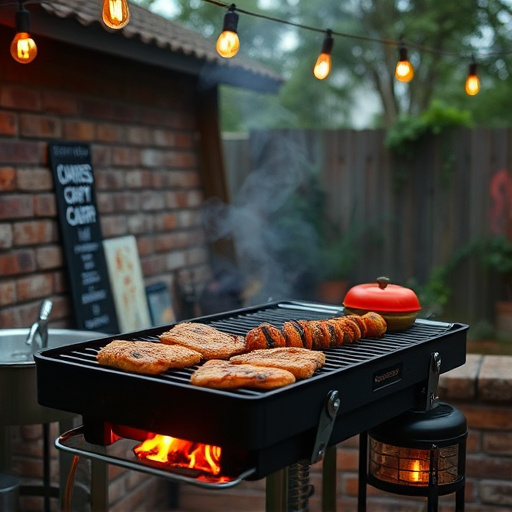Crafting the perfect Smoked BBQ Brisket Recipe requires selecting the ideal packer-cut brisket with a 2:1 fat-to-meat ratio for tender, juicy results. Prepare your smoker for indirect heat at 225°F – 250°F (107°C – 121°C). Dry brine the brisket with salt, sugar, and spices for 24-48 hours to enhance flavor and tenderness. Smoke the brisket for 1-1.5 hours per pound, regularly basting and flipping it. Check doneness using a thermometer or touch test, aiming for 203°F (95°C). Rest the brisket for 1-2 hours before slicing against the grain. Pair with classic or adventurous sides to elevate the dish.
Unleash your inner BBQ master with our comprehensive guide to smoking the perfect brisket. From selecting the ideal cut to mastering the art of dry brining, this step-by-step recipe ensures juicy, flavorful results. Learn how to prepare your smoker for indirect heat, control smoking temperatures, and perfectly baste and flip your meat. Discover the best ways to test for doneness, rest and slice for tender goodness, and explore delicious pairing suggestions. Elevate your BBQ game with this ultimate smoked BBQ brisket recipe!
- Choosing the Right Brisket Cut
- Preparing Your Smoker for Indirect Heat
- Dry Brining the Meat: A Key Step
- Smoking the Brisket: Time and Temperature Control
- Mastering the Art of Baste and Flip
- Testing for Doneness: The Best Ways to Check
- Resting and Slicing: Ensuring Tender Results
- Pairing and Serving Suggestions
Choosing the Right Brisket Cut
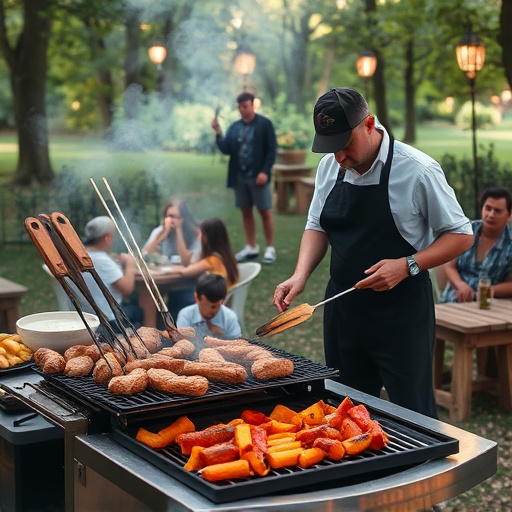
When it comes to smoked brisket, selecting the perfect cut is half the battle won in your quest for mouthwatering BBQ bliss. Look for a packer-cut brisket, which is considered the gold standard among barbecue enthusiasts. This cut consists of both the lean and fatty parts, maintaining a crucial balance that ensures a juicy, flavorful result when smoked slowly over low heat.
The packer brisket typically has an approximate 2:1 ratio of fat to meat, offering both mouthfeel and moisture retention during the slow-smoking process, key factors for achieving that tender, succulent texture in your smoked BBQ brisket recipe. This cut is also larger, allowing for a more generous serving size, perfect for satisfying hungry crowds at your next backyard barbecue gathering.
Preparing Your Smoker for Indirect Heat
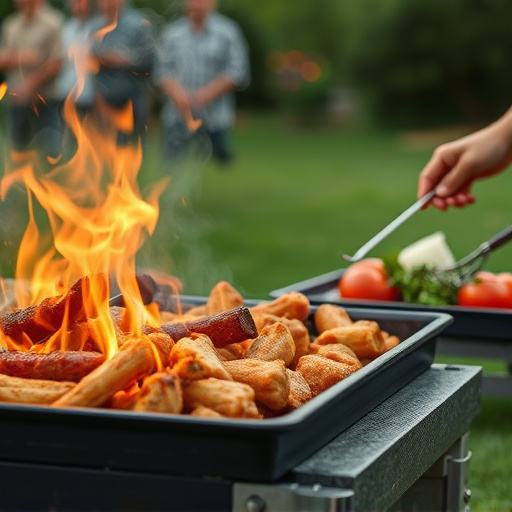
To prepare your smoker for the perfect smoked BBQ brisket recipe, start by setting it up for indirect heat. This means positioning the meat away from the direct flame or heat source, allowing for a slow and steady cooking process. Most smokers have a main chamber and a firebox; arrange them so that hot air can circulate around the brisket but isn’t directly hitting it. Fill your firebox with your preferred fuel—charcoal or wood chunks—and light it. Allow the coals to burn until they’re covered in a thin layer of ash, indicating a stable, indirect heat. Maintain this temperature between 225°F and 250°F (107°C – 121°C) throughout the cooking process.
Once your smoker is ready, place your brisket on the grate, fat side up, ensuring even cooking. This step-by-step guide to smoked brisket focuses on patience and precise temperature control. With the right setup, you’re well on your way to achieving tender, juicy results that will impress any BBQ lover as the savory flavors of your smoked BBQ brisket recipe fill the air.
Dry Brining the Meat: A Key Step
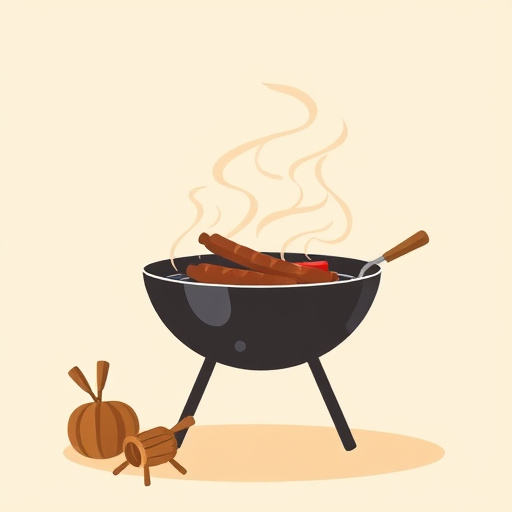
Dry brining is a crucial step in achieving the perfect smoked brisket. It’s a simple process that significantly enhances the flavor and texture of your BBQ brisket recipe. By curing the meat with salt, sugar, and other spices, you draw out moisture, creating a richer, more intense taste. This step also helps to break down tough connective tissues, making the brisket more tender after smoking.
When preparing your smoked BBQ brisket, allow 24-48 hours for dry brining. Rub the desired amount of salt and sugar mixture all over the meat, making sure it’s evenly coated. You can add other spices like black peppercorns or garlic powder for added flavor. Place the brined brisket in a vacuum seal bag or wrap tightly in plastic wrap, ensuring it’s fully submerged in its own juices. Refrigerate during this time, and remember, patience is key – the longer the dry brining period, the better your results will be.
Smoking the Brisket: Time and Temperature Control

Smoking the brisket is an art that requires precision and patience, but with the right techniques, you can achieve perfectly smoked BBQ brisket every time. The key to success lies in controlling time and temperature. Ideally, smoking brisket should take around 1-1.5 hours per pound at a consistent temperature between 225°F – 250°F (107°C – 121°C). This slow cooking process allows the collagen in the meat to break down, resulting in tender and flavorful brisket.
To maintain optimal temperature, invest in a good quality smoker that can keep a steady heat. Regularly check the internal temperature of the brisket with a meat thermometer. The goal is to smoke the brisket until it reaches an internal temperature of 165°F – 170°F (74°C – 77°C), at which point it’s safe to slice and serve. Remember, time and temperature are crucial factors in creating a mouthwatering smoked BBQ brisket recipe that will impress your taste buds.
Mastering the Art of Baste and Flip
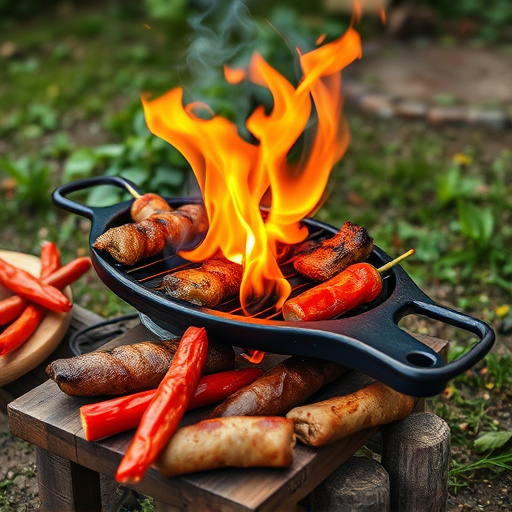
Mastering the art of basting and flipping is a crucial step in cooking the perfect smoked BBQ brisket recipe. Baste the meat regularly with a combination of your favorite BBQ sauce, apple juice, or even beer to keep it moist during the long smoking process. This not only adds flavor but also prevents the brisket from drying out. Use a spray bottle or brush to apply the baste evenly over both sides of the meat.
Flipping is another essential technique. Depending on your smoker setup and heat levels, you may need to flip the brisket once or twice during cooking. This ensures even smoking and helps prevent one side from burning while keeping the other side too cold. Always use oven mitts when handling hot meat and be careful not to disrupt the smoke flow inside your smoker.
Testing for Doneness: The Best Ways to Check

Testing for doneness is a crucial part of achieving perfection in your smoked BBQ brisket recipe. The best ways to check involve using a few simple techniques that will ensure your meat is tender, juicy, and flavorful. One method is to utilize a meat thermometer, inserting it into the thickest part of the brisket without touching bone or fat. A well-cooked brisket should have an internal temperature of around 203°F (95°C), at which point collagen breaks down, resulting in tender meat.
Another reliable method is the touch test. Pressing the brisket gently with your finger can provide a good indication of its doneness. It should feel firm but not hard, and the meat should start to shrink away from the bone as it cooks. Additionally, visually inspecting the brisket for signs of caramelization and the formation of a crispy crust can also help determine its readiness. Combining these techniques will ensure you’re able to master your smoked BBQ brisket recipe every time.
Resting and Slicing: Ensuring Tender Results
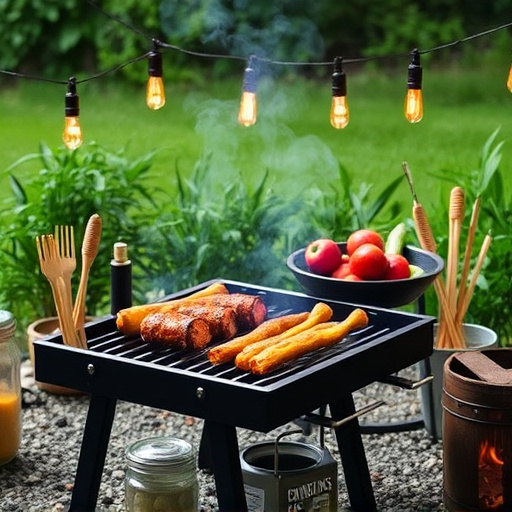
After carefully cooking your smoked BBQ brisket, the next crucial step in achieving tender, juicy results is resting and slicing. Once the brisket reaches an internal temperature of about 203°F (95°C), remove it from the smoker. This resting period allows the juices to redistribute throughout the meat, ensuring each bite is incredibly moist and flavorful.
During rest, cover the brisket loosely with foil or butcher paper to prevent excessive drying. Let it sit for approximately 1-2 hours. After resting, slice the brisket against the grain using a sharp knife. Cutting against the grain ensures each slice is tender and not tough. This simple step will make your smoked BBQ brisket incredibly easy to chew and delightfully flavorful.
Pairing and Serving Suggestions
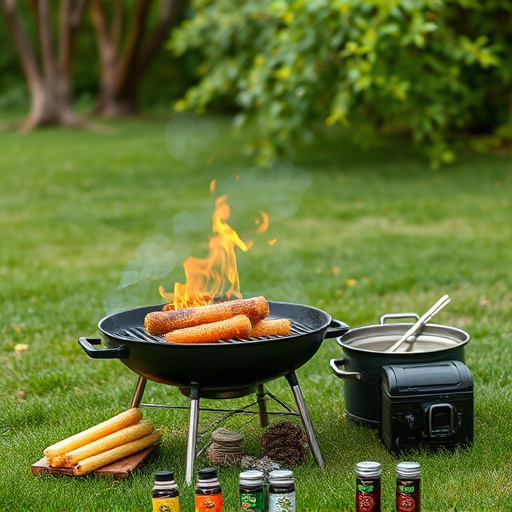
When it comes to serving smoked brisket, the possibilities are endless. Pairing it with the right sides and sauces can elevate this classic BBQ dish to new heights. Start with a simple plate of sliced brisket, letting its rich, smoky flavor stand front and center. Accompany it with homemade potato salad or coleslaw for a classic combo that balances creamy textures against the meat’s depth.
For a more adventurous approach, consider serving smoked brisket tacos. The tender meat pairs wonderfully with sharp cheddar cheese, fresh jalapeños, and a tangy BBQ sauce. Alternatively, slice the brisket thinly and top it with a simple peppercorn sauce or even a sweet and savory apple cider glaze for a unique twist on your smoked BBQ brisket recipe.
